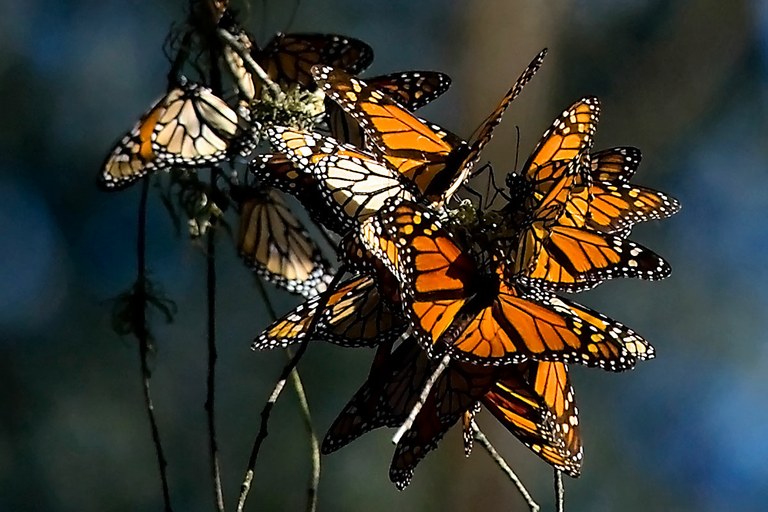ENDANGERED: In California, the monarch population experienced a major decline over time.
By Esther Whang, Staff Writer
Butterflies have always been admired as a beautiful part of nature – their delicate, elegant wings that send their fuzzy bodies dancing up into the air, their wings rising and falling as they flap through the sky. However, there’s a chance we may not get to behold the beauty of our beloved butterflies for much longer, as their population has decreased by more than 50 percent over the past couple years, according to SF Gate writer Oakland North’s article “Western monarch butterflies could disappear.”
The monarch species is facing extinction, as their numbers have dropped significantly from an abundant 1 million in 1981 to a devastating 30,000 as of Thanksgiving last year (Xerces Society). According to the Xerces Society, an organization committed to preserving invertebrates, a comparison of last year’s 30,000 count to the count done in 2017 (192,668 monarchs) displayed an 86% decrease in monarch population. Also according to Xerces Society conservation biologists Emma Pelton and Katie Hietala-Henschell, juxtaposing “the numbers present in the 1980s” to the numbers counted last Thanksgiving showed a shocking 99.4% decline.
In an attempt to come up with a solution to the problem, scientists have posited a few possible reasons for the exponential decrease in monarch populations (SF Gate). One suspected cause is the tardiness of monarchs’ arrival to mating areas, although according to SF Gate writer Michelle Robertson, “the organization says there is no substantial evidence of a delayed migration.” Another is the use of pesticides and herbicides, which can be harmful to milkweed, monarch butterflies’ main source of food and protection from parasites, causing the removal of monarch habitat (SF Gate).
According to researchers from Stanford University and the University of Michigan, the main reason for the decrease in monarchs is climate change (SF Gate). “The study found carbon dioxide from car and factory exhaust — which scientists cite as the primary cause of global warming — reduced a natural toxin in milkweed that feeding caterpillars use to fight parasites,” Robertson said. When butterflies finish mating, they lay their eggs on milkweed plants, then die off due to natural causes (SF Gate). The caterpillars then eat the milkweed and proceed to carry out the cycle of the preceding monarchs until they too die off (SF Gate). However, if the caterpillars can’t live long enough to grow into monarchs and fully complete their cycle to help their species thrive, their numbers will continue to drop (SF Gate).
Monarchs play a vital role in our world; as pollinators, they are responsible for “75% of the food crops worldwide,” according to Tech Times writer Katherine Derla. Without monarchs, food abundance would decrease significantly. Since they are also a key mark of a healthy ecosystem, without them, it would be hard to tell whether an ecosystem is running smoothly or not (Tech Times). Without monarch butterflies, the whole world would suffer greatly.
According to Monarch Joint Venture, humans, like monarchs can be affected by changes in their environment. The pesticides and herbicides as well as climate change can affect the qualities of plants and animals we eat (One Green Planet). This may in turn affect our ability to fight off infections, diseases, and negatively impact our health in general, which could result in a decline in the human population, just like the monarchs (Monarch Joint Venture).
To help save the monarch population as well as ours, one can avoid using pesticides, plant milkweeds, use different methods of transportation besides a gas-fueled car, try to reduce waste, and do anything else that would lessen traces of our carbon footprints (Learn About Nature). More and more butterflies are appearing in Southern California due to migration patterns and the warmer weather, all the more reason to preserve the beautiful butterflies that play such a significant role in our environment.

